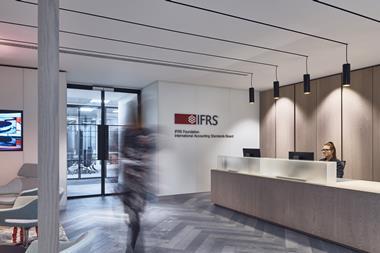Strong fixed income performance over last June, caused by the UK’s vote for Brexit, helped Spain’s occupational pension funds pull back their returns to -0.49% for the 12 months to the end of June, according to the country’s Investment and Pension Fund Association (INVERCO).
The pension funds had made -3.33% for the 12 months to the end of March 2016, the negative returns created by market instability in the first few months of the year.
However, INVERCO said the uncertainty caused by the results of the UK’s June referendum disrupted financial markets that month, with global markets in most countries, especially in Europe, experiencing sharp corrections.
“The strong increase in risk aversion prompted a shift by investors towards safe haven assets,” INVERCO said.
“The 10-year German bund ended June with a negative yield, while Spanish 10-year government bonds finished with a 1.25% yield, very close to the historic low of March 2015.
“In this way, pension plans with exposure to long-term fixed income achieved very positive returns over the year.”
Average annualised returns for Spanish occupational funds were 5.03% for the three years to 30 June 2016, and 4.77% for the five years to that date.
As of the end of June, total assets under management for the occupational pensions sector stood at €34.9bn, a decrease of 2.2% over the past year.
The number of participants remains stable, at just over 2m.
Total pension assets, including those in individual plans, amount to €103bn.
The biggest single component of pension fund portfolios – 31.8% – is still invested in Spanish government bonds, with a further 17.9% in Spanish corporate bonds.
Since December 2015, there has been a slight dip – 1.5% – in government bonds, with a 2% rise in corporate bonds.
Fixed income investments outside Spain make up 8.2% of portfolios, giving a total of 57.9% for fixed income as a whole.
Equity allocations are slowly increasing, making up 23.1% of portfolios as of the end of June (8.4% domestic, 14.7% non-domestic) compared with 22.6% at end-2015, and 21.4% at the end of June 2015.
Meanwhile, the slight shift to non-domestic assets over the past year has consolidated, with 22.9% of portfolios now invested outside Spain at the end of June 2016, compared with 19.4% a year previously.
Xavier Bellavista, principal at Mercer, said: “The reduction in the level of risk has been happening in the past few months, anticipating the uncertainties we expected for 2016, such as interest rate decisions and Brexit.
“When these events happened, we did not see many short-term reactions, as most occupational pension funds had reduced their risk levels.
“However, they are following the situation to see if they need to further adjust or reduce their level of risk.”
Mercer’s Pension Investment Performance Service (PIPS) shows non-EU fixed income was the best-performing asset class over the six months to the end of June 2016, returning 5%.
EU fixed income, which Bellavista considers to have been regarded as a safe haven by investors, returned 2.4%.
The PIPS survey covers a large sample of Spanish pension funds, most of them occupational schemes.
Non-EU equities returned -1.4% over the period, while EU equities were the worst performers, with -9.4%.
Alternatives, however, returned 1.7% over the first six months of 2016.
Turning to the next 12 months, Bellavista said: “We expect funds to continue working on diversification, especially looking for alternatives to fixed income assets.
“We don’t expect a significant change in the main asset class exposure but an increase in the underlying asset classes – for example, absolute return fixed income, private debt, convertibles and high yield.”
















No comments yet